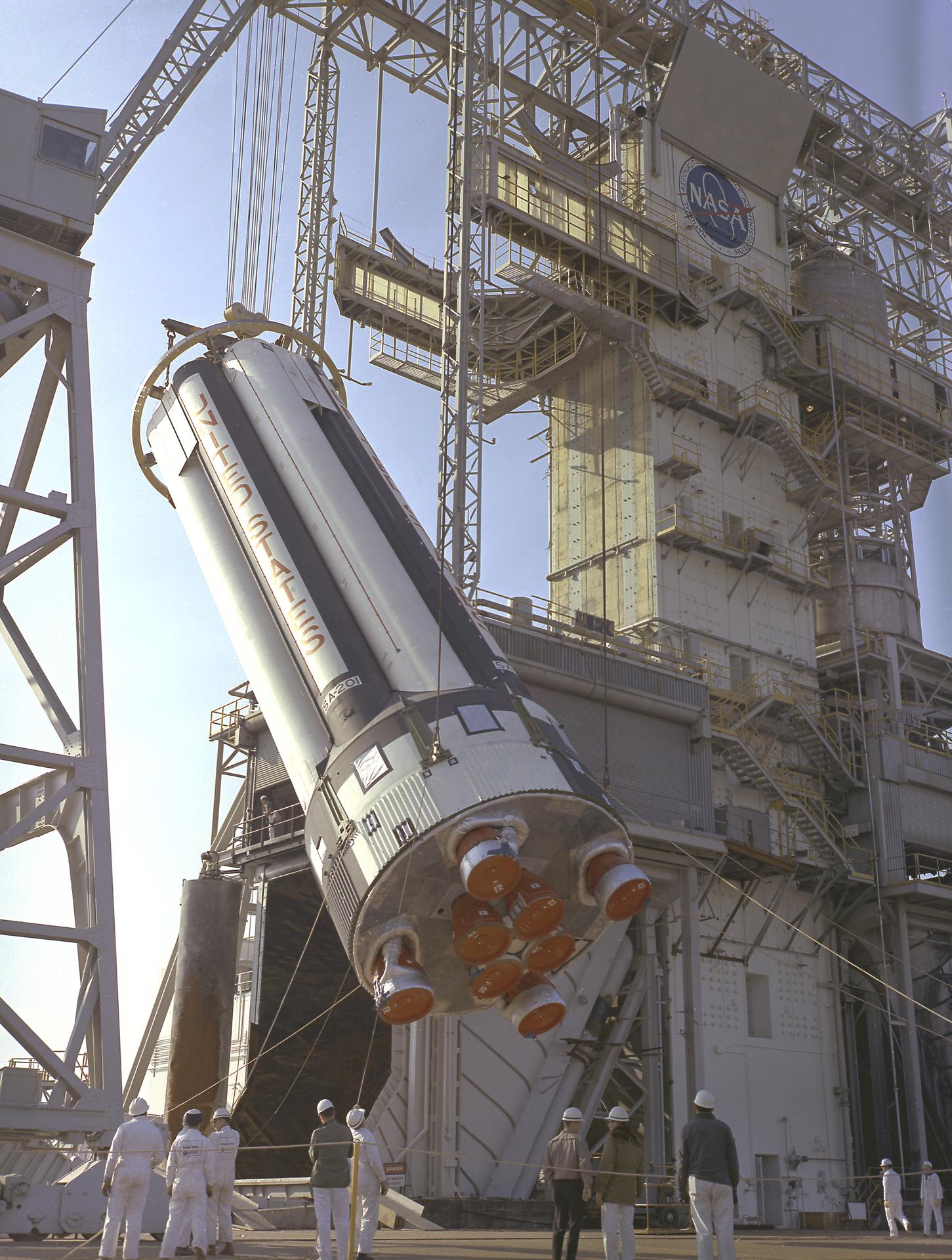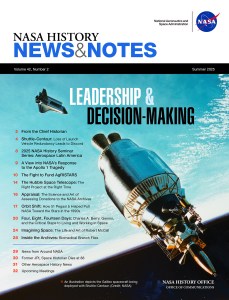On May 23, 1984, NASA announced the selection of its 10th group of astronauts. Chosen from nearly 5,000 applicants, the group comprised 17 astronaut candidates – seven pilots and 10 mission specialists – and included three women and one Hispanic American. They reported for duty on July 2 to begin their year-long training period to qualify as astronauts, following which they became eligible for flight assignments. As a group, they distinguished themselves, participating in a total of 51 spaceflights, two of them as space station expedition commanders. All members of the group completed at least one spaceflight, with two making a single trip into space, five making two trips, four going three times, four flying four times, one flying five times, and one making six trips.
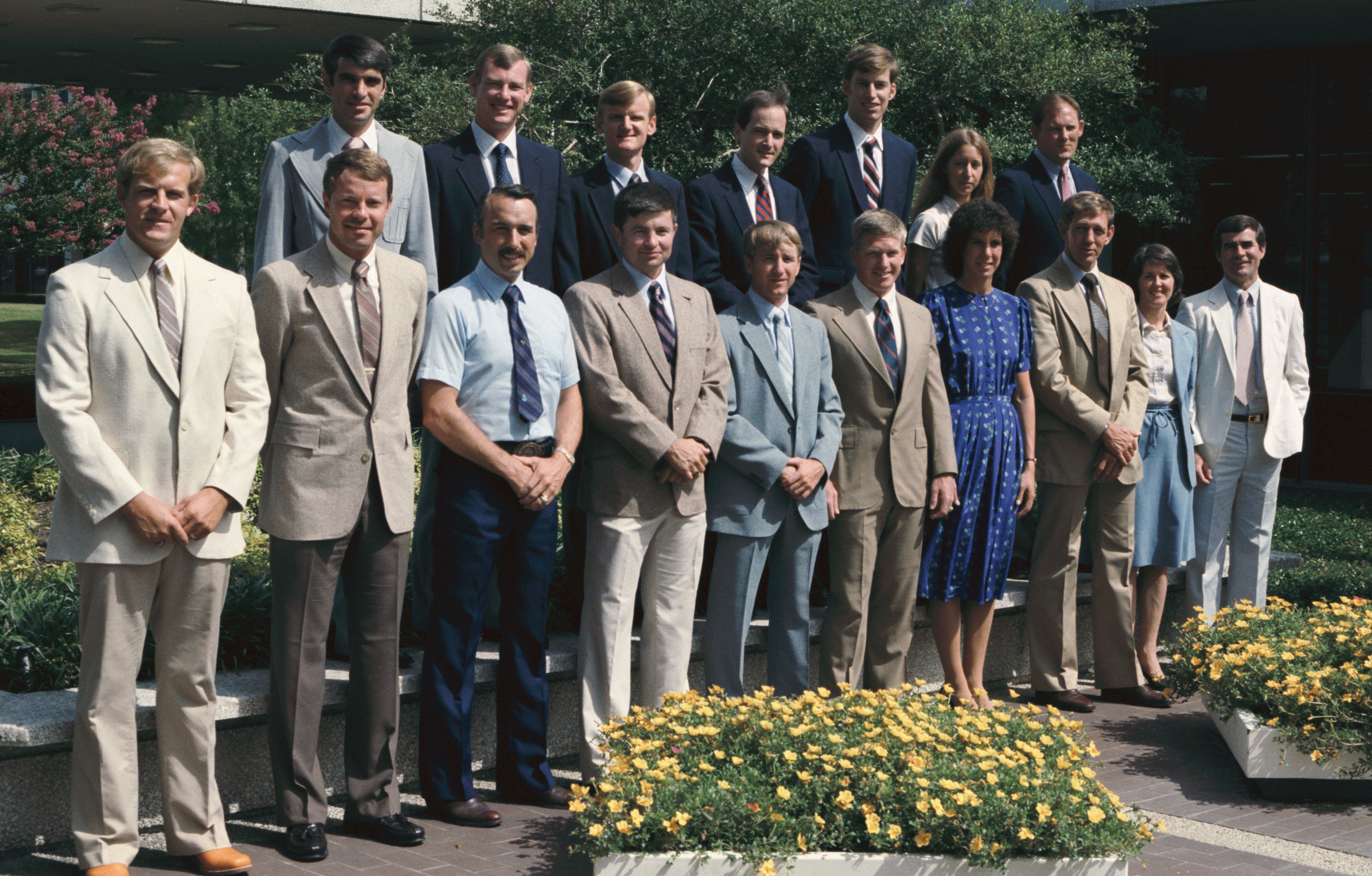
The Group 10 NASA astronaut candidates pose for a group photo on their arrival day at NASA’s Johnson Space Center in Houston – front row, Mark C. Lee, left, L. Blaine Hammond, James C. Adamson, Kenneth D. Cameron, Frank L. Culbertson, William M. Shepherd, Ellen L. Shulman, Michael J. McCulley, Kathryn C. Thornton, and C. Lacy Veach; back row, Sidney M. Gutierrez, Mark N. Brown, John H. Casper, G. David Low, James D. Wetherbee, Marsha S. Ivins, and Manley L. “Sonny” Carter.
On May 16, 1983, NASA announced the institution of an annual astronaut selection process. The agency accepted applications for the first round between Oct. 1 and Dec. 1, 1983, anticipating selection of six pilots and six mission specialists in the spring of 1984. NASA received 4,934 applications, selecting 128 candidates for interviews and extensive medical exams at NASA’s Johnson Space Center in Houston in February and March 1984 in groups of about 20. On May 23, 1984, NASA introduced the 17 new astronaut candidates, the third group of space shuttle astronauts. The newest class of astronaut candidates included Kenneth D. Cameron, John H. Casper, Frank L. Culbertson, Sidney M. Gutierrez, L. Blaine Hammond, Michael J. McCulley, and James D. Wetherbee as the seven pilot candidates; and James C. Adamson, Mark N. Brown, Manley L. “Sonny” Carter, Marsha S. Ivins, Mark C. Lee, G. David Low, William M. Shepherd, Ellen L. Shulman, Kathryn C. Thornton, and C. Lacy Veach as the 10 mission specialist candidates.
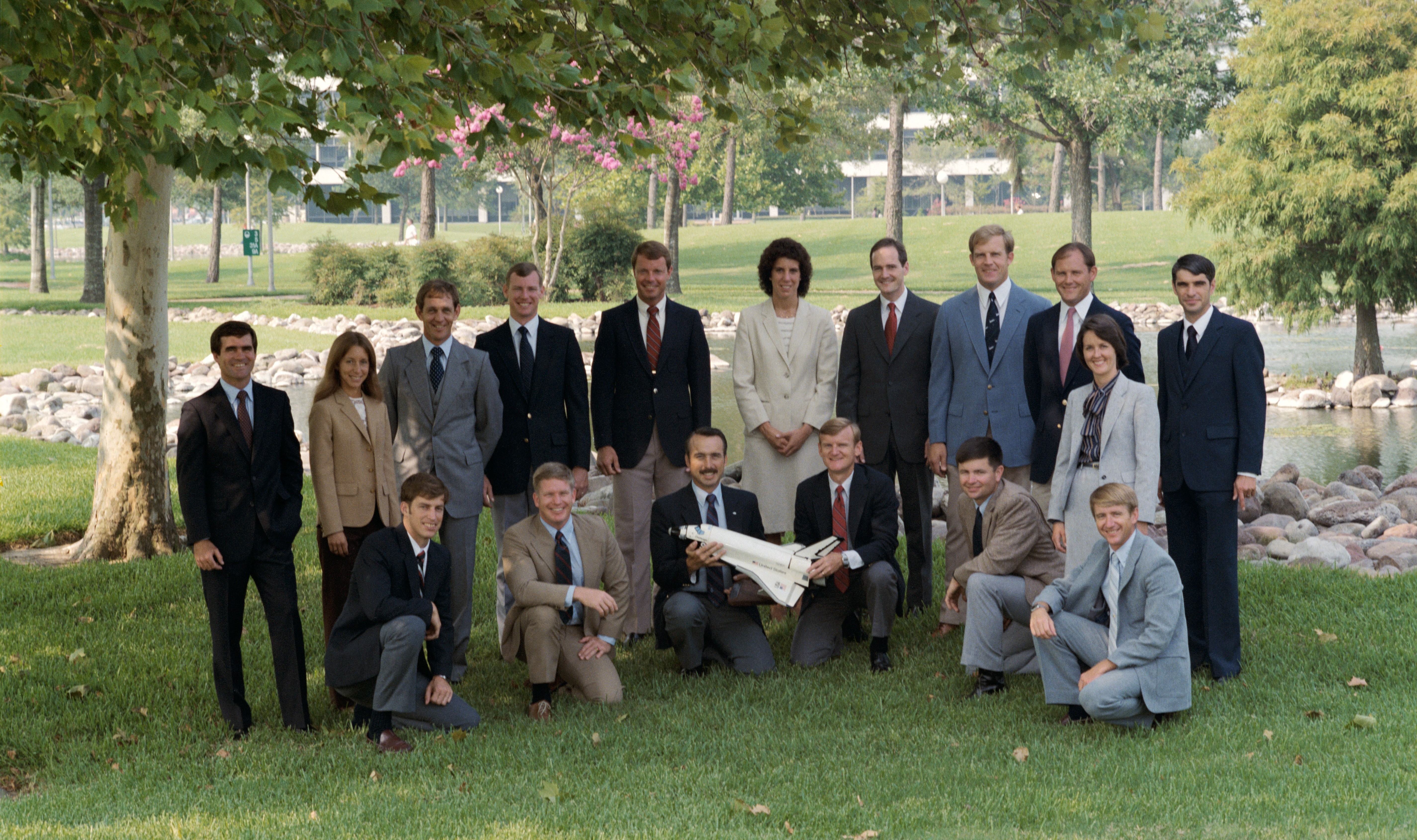
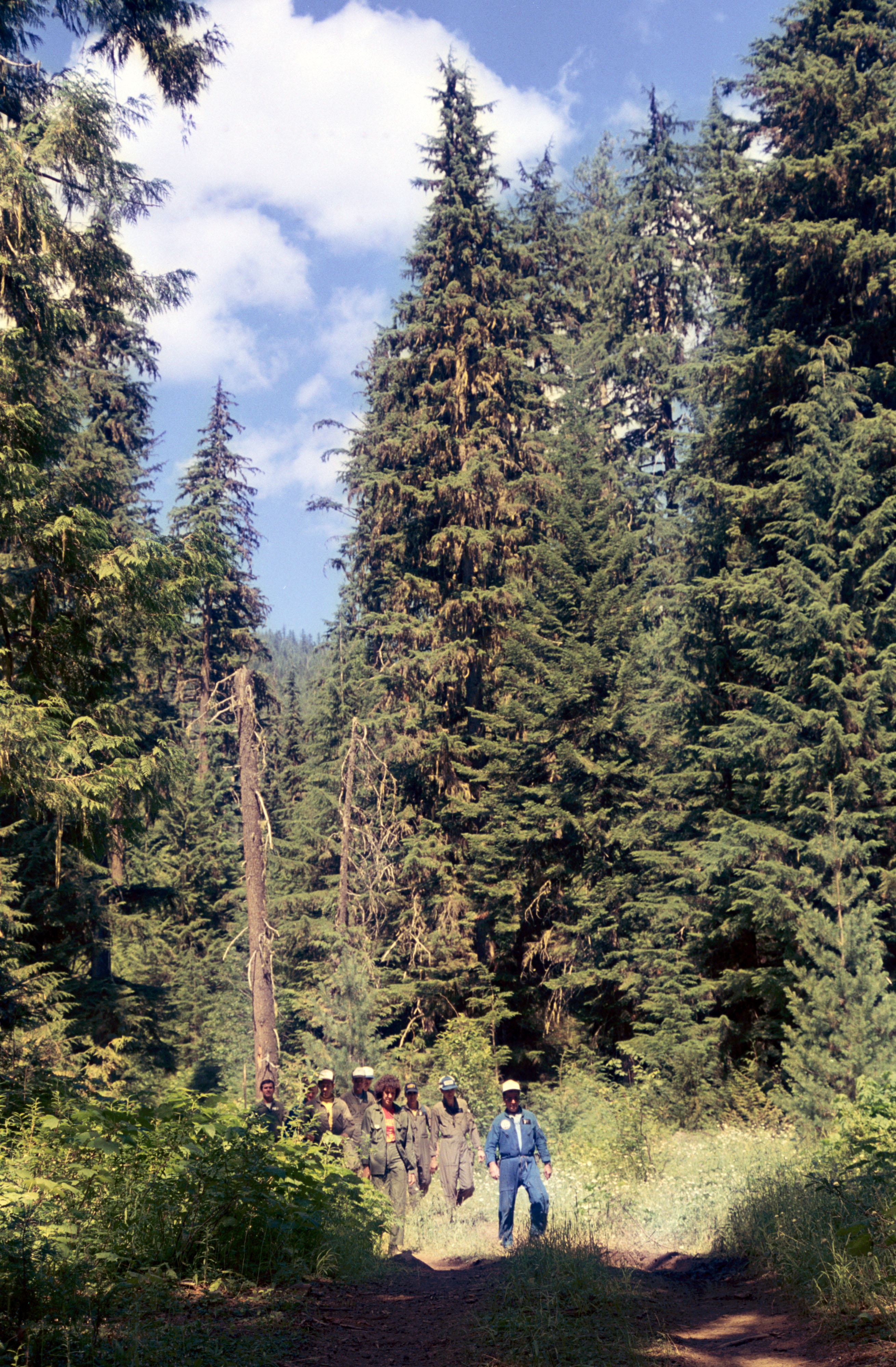
Left: Group 10 astronaut candidates. Right: Group 10 astronaut candidates during survival training in Washington State.
The 17 astronaut candidates arrived at JSC on July 2, 1984, to begin their one-year training and certification period. The training included scientific and technical briefings, intensive instruction in space shuttle systems, physiological training, T-38 flight training, and water and wilderness survival training. They also received orientation tours at NASA centers. They completed the astronaut candidate training on May 30, 1985, and qualified for various technical assignments within the astronaut office and for space shuttle flight assignments.
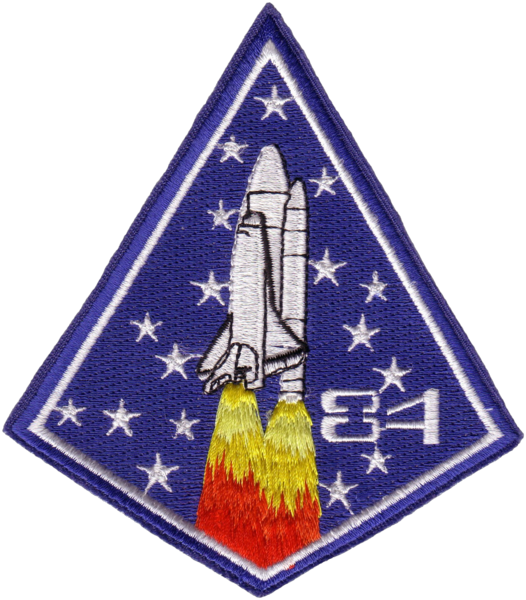
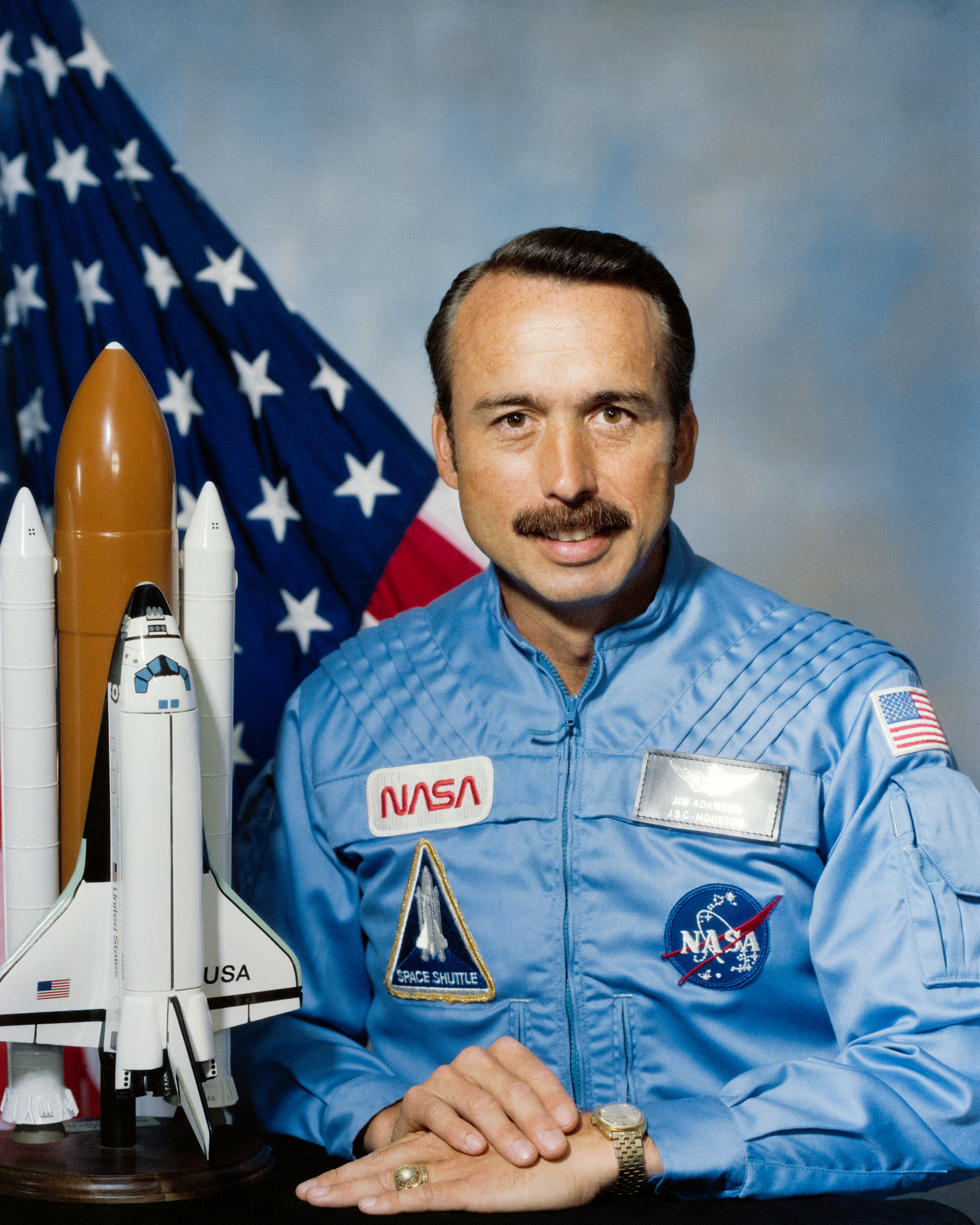
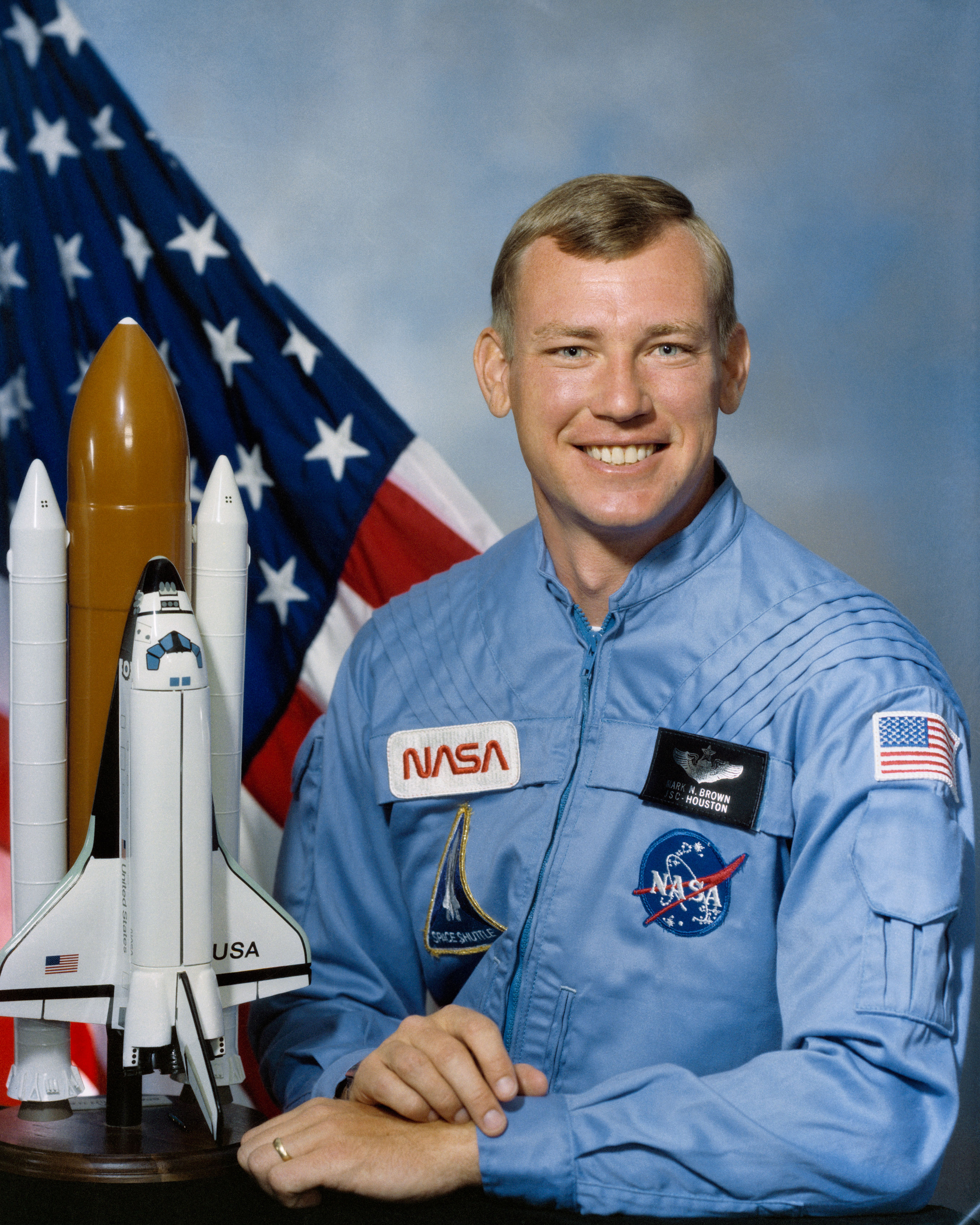
The Group 10 patch, left, and Group 10 NASA astronauts James C. Adamson and Mark N. Brown.
The Group 10 astronauts called themselves The Maggots. The nickname apparently originated with Shepherd, inspired during an early aircraft survival school session by the term U.S. Marines use for new recruits. Carter led the design of the Group 10 patch, a diamond shaped insignia that included elements such as a space shuttle lifting off, 17 stars representing the astronauts, and the number 84 for the year of their selection.
Adamson, a flight controller at JSC when selected, called New York state home. He received his first spaceflight assignment in January 1986 as a mission specialist on STS-61N, along with fellow Maggots McCulley and Brown, a Department of Defense mission aboard Columbia then planned for September 1986. The January 1986 Challenger accident resulted in the suspension of all flight and crew assignments. In February 1988, NASA assigned Adamson as a mission specialist on STS-28, along with fellow Maggot Brown, a five-day classified Department of Defense (DOD) mission aboard Columbia in August 1989. For his second and final mission, Adamson flew as a mission specialist along with fellow Maggot Low on STS-43 in August 1991. During the nine-day flight aboard Atlantis, the crew deployed the fifth Tracking and Data Relay System (TDRS) satellite. Adamson accumulated 13 days 22 hours 21 minutes of spaceflight time on his two missions.
Brown, a native of Indiana, started working at JSC in 1980 in the flight activities section. He received his first spaceflight assignment in January 1986 as a mission specialist on STS-61N, along with fellow Maggots McCulley and Adamson, a DOD mission aboard Columbia then planned for September 1986. The January 1986 Challenger accident resulted in the suspension of all flight and crew assignments. In February 1988, NASA assigned Brown as a mission specialist on STS-28, along with fellow Maggot Adamson, a five-day classified DOD mission aboard Columbia in August 1989. He flew a second time in September 1991 aboard Discovery as a mission specialist on STS-48, a five-day mission to deploy the Upper Atmosphere Research Satellite (UARS). Brown logged 10 days 9 hours 27 minutes in space on his two missions.

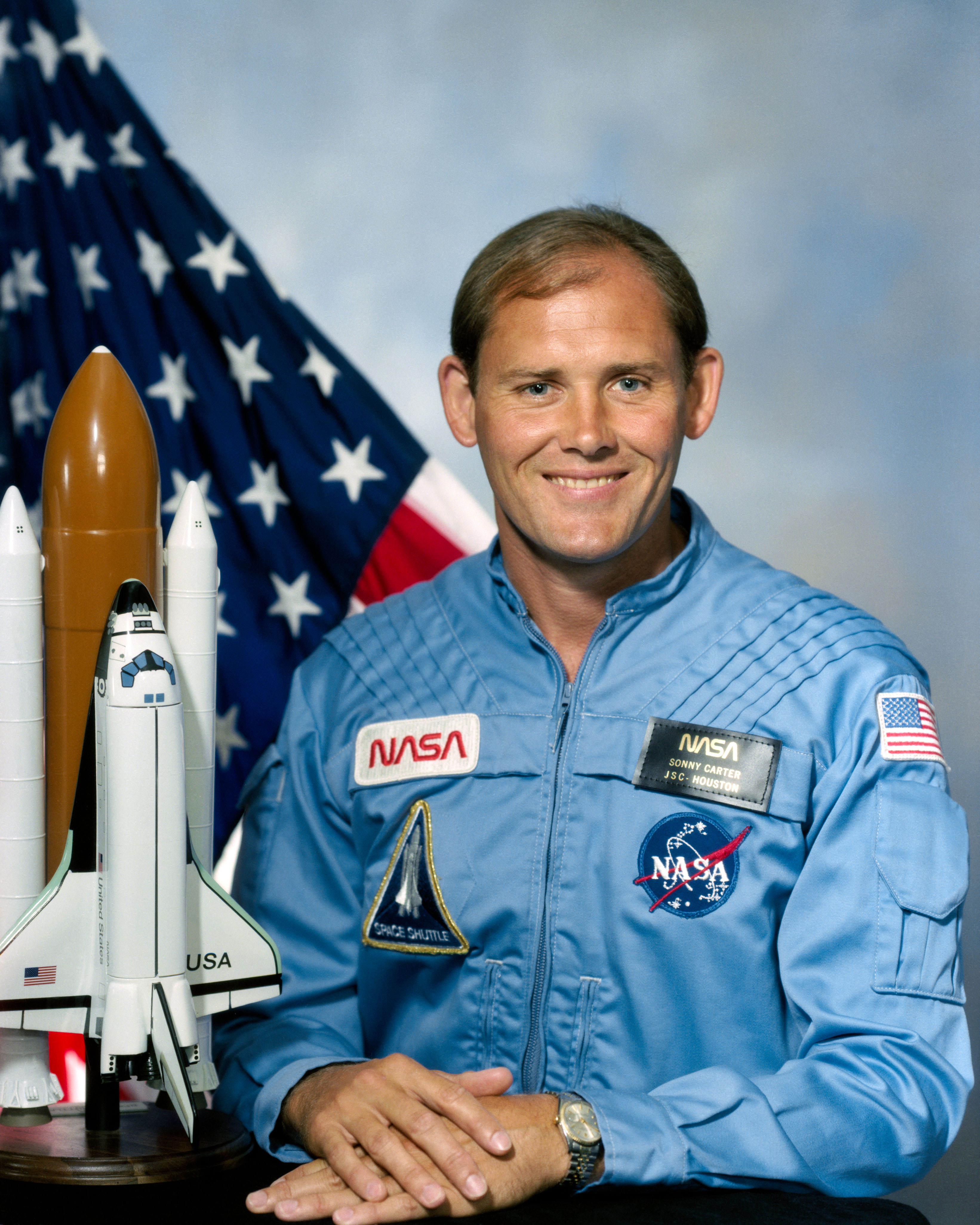
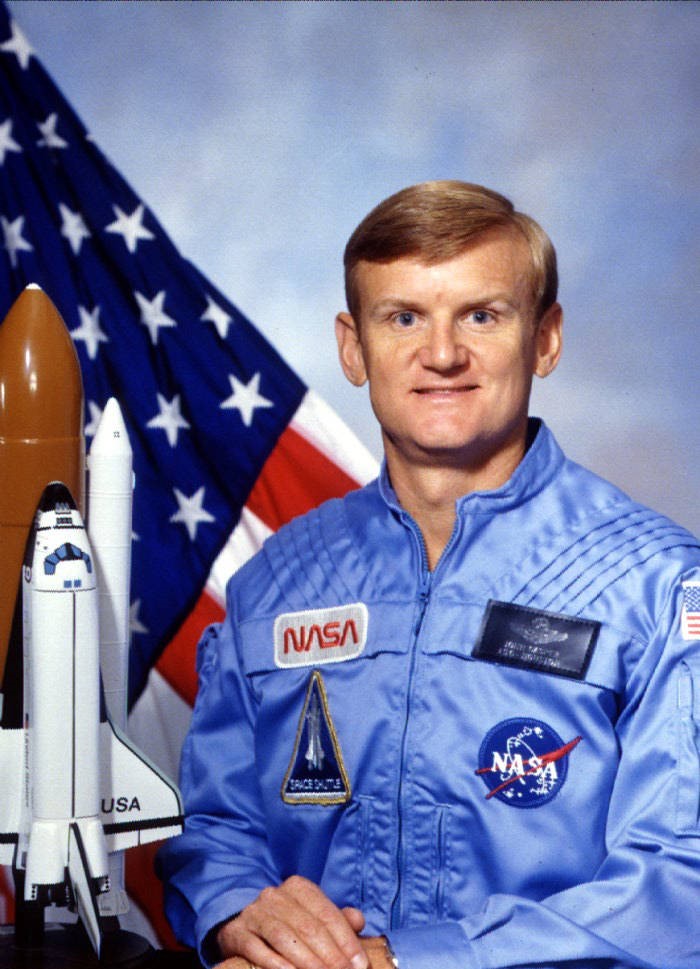
Group 10 NASA astronauts Kenneth D. Cameron, left, L. Manley “Sonny” Carter, and John H. Casper.
A U.S. Marine test pilot from Ohio, Cameron received his first spaceflight assignment as the pilot on STS-37 in April 1991, a six-day mission aboard Atlantis to deploy the Gamma Ray Observatory. The flight also included the first U.S. spacewalk since 1985. He served as commander on his second mission, STS-56, in April 1993, the second Atmospheric Laboratory for Applications and Science (ATLAS) Earth observation mission aboard Discovery. In 1994, Cameron served as the first NASA Director of Operations in Star City, Moscow, working with Cosmonaut Training Center staff to set up a support system for astronaut operations and training for the Shuttle/Mir Program. He flew his third and final spaceflight as commander of STS-74, the second Shuttle/Mir docking mission in November 1995. During the eight-day Atlantis mission, the crew added the Docking Module to the Mir space station. Cameron accumulated 23 days 10 hours 10 minutes in space during his three spaceflights.
Before NASA selected Georgia-born Carter as an astronaut, he had played professional soccer, obtained a medical degree, flew as a Marine fighter pilot, and graduated test pilot school. He received his first spaceflight assignment in September 1985 as a mission specialist on STS-61I, a mission aboard Challenger planned for September 1986 to launch the Intelsat VI-1 communications satellite and retrieve the Long Duration Exposure Facility (LDEF). The January 1986 Challenger accident resulted in the suspension of all flight and crew assignments. In November 1988, NASA assigned Carter to STS-33, a five-day classified DOD mission aboard Discovery in November 1989, flying with fellow Maggot Thornton. For his second spaceflight, NASA assigned Carter to STS-42, the first International Microgravity Laboratory Spacelab mission planned for January 1992. Tragically, Carter died in the crash of a commercial plane in April 1991, before he could return to space.
Georgia native Casper completed his first spaceflight as pilot of STS-36, a four-day classified DOD mission aboard Atlantis in February-March 1990 that flew at a 62-degree inclination, the highest of any American spaceflight. He commanded his second flight, STS-54, in January 1993, Endeavour’s six-day mission to deploy the sixth TRDS satellite. Casper next commanded STS-62 in March 1994, a two-week microgravity research mission aboard Columbia. He served as commander on his fourth and final flight, the 10-day STS-77 mission of Endeavour that deployed and retrieved the SPARTAN-207 payload that included an inflatable antenna. Over his four missions, Casper accumulated 34 days 9 hours 51 minutes of spaceflight time. Following his last mission, Casper served in management roles of increasing responsibility at JSC, including director of safety, reliability, and quality assurance. Following the February 2003 Columbia accident, Casper served in several positions to help NASA safely return the shuttle to flight, including as associate shuttle program manager.
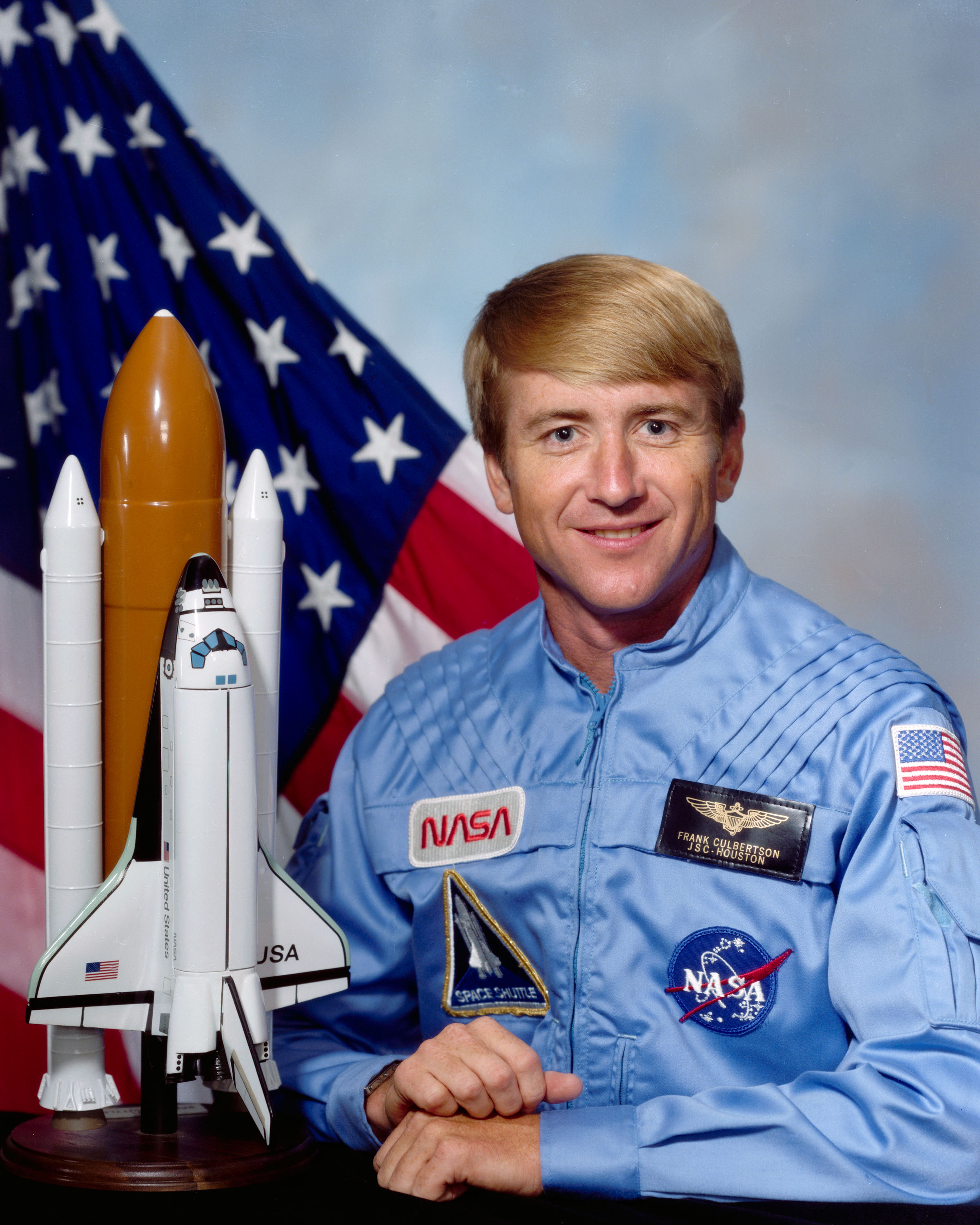
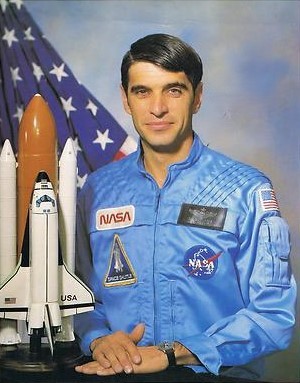
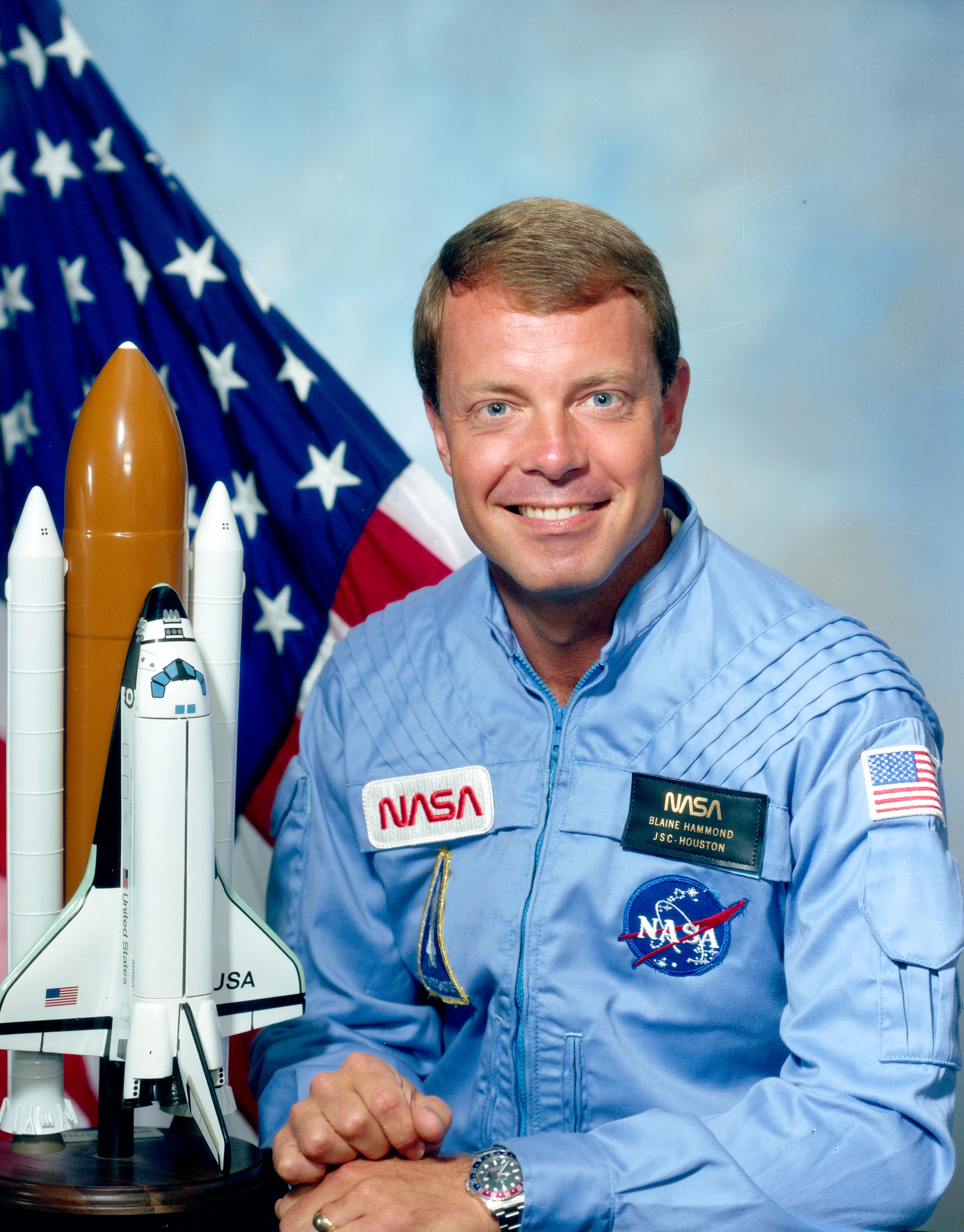
Group 10 NASA astronauts Frank L. Culbertson, left, Sidney M. Gutierrez, and L. Blaine Hammond.
Culbertson, a native of South Carolina and naval aviator, flew his first mission as pilot of STS-38, a five-day classified DOD mission aboard Atlantis in November 1990. On his second spaceflight, he commanded STS-51, a 10-day mission aboard Discovery in September 1993 that deployed and retrieved a SPARTAN payload. Following his second flight, Culbertson served first as deputy in 1994 and then as program manager from 1995 until 1998 of the Shuttle/Mir Program, and then one year as deputy program manager for operations of the International Space Station Program before returning to active duty in the astronaut office. On his third and final spaceflight, Culbertson served as commander of Expedition 3 aboard the space station, a 128-day flight from August to December 2001. During his expedition, he participated in a 5-hour 4-minute spacewalk. He logged 143 days 14 hours 50 minutes in space during his three missions. After retiring from NASA, Culbertson served as an executive with Orbital Sciences Corporation, later bought by Northrup Grumman, to develop and operate the Cygnus cargo resupply vehicles to the space station.
New Mexico native Gutierrez completed his first spaceflight in June 1991 as the pilot of STS-40, the Spacelab Life Sciences-1 mission aboard Columbia. During the nine-day flight, the crew conducted 18 experiments in life sciences. On his second flight, he commanded STS-59, an 11-day mission in April 1994 aboard Endeavour. The Space Radar Laboratory-1 mission conducted studies dedicated to study of the Earth and its atmosphere. Over his two missions, Gutierrez accumulated 20 days 8 hours 3 minutes of spaceflight time.
Missouri native and U.S. Air Force test pilot Hammond flew his first spaceflight as pilot of STS-39, an unclassified DOD mission in April-May 1991. During the eight-day mission aboard Discovery, the seven-member crew that included fellow Maggot Veach conducted experiments to study atmospheric phenomena and deployed and retrieved a SPARTAN satellite. He flew again as pilot of STS-64 with fellow Maggot Lee, an 11-day flight aboard Discovery in September 1994, with the LIDAR in Space Technology Experiment as the primary payload. Hammond accumulated 19 days 6 hours 11 minutes in space over his two spaceflights.
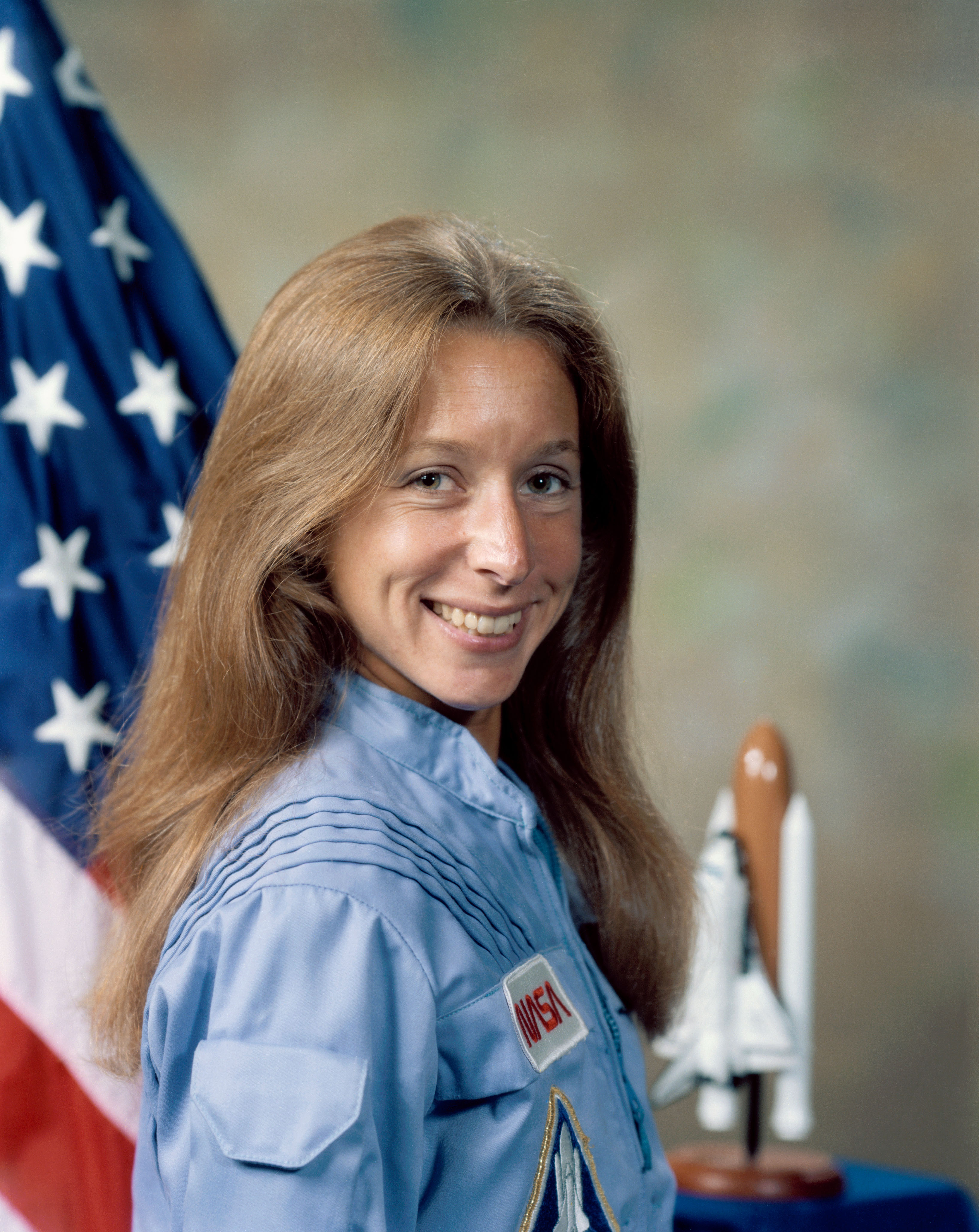
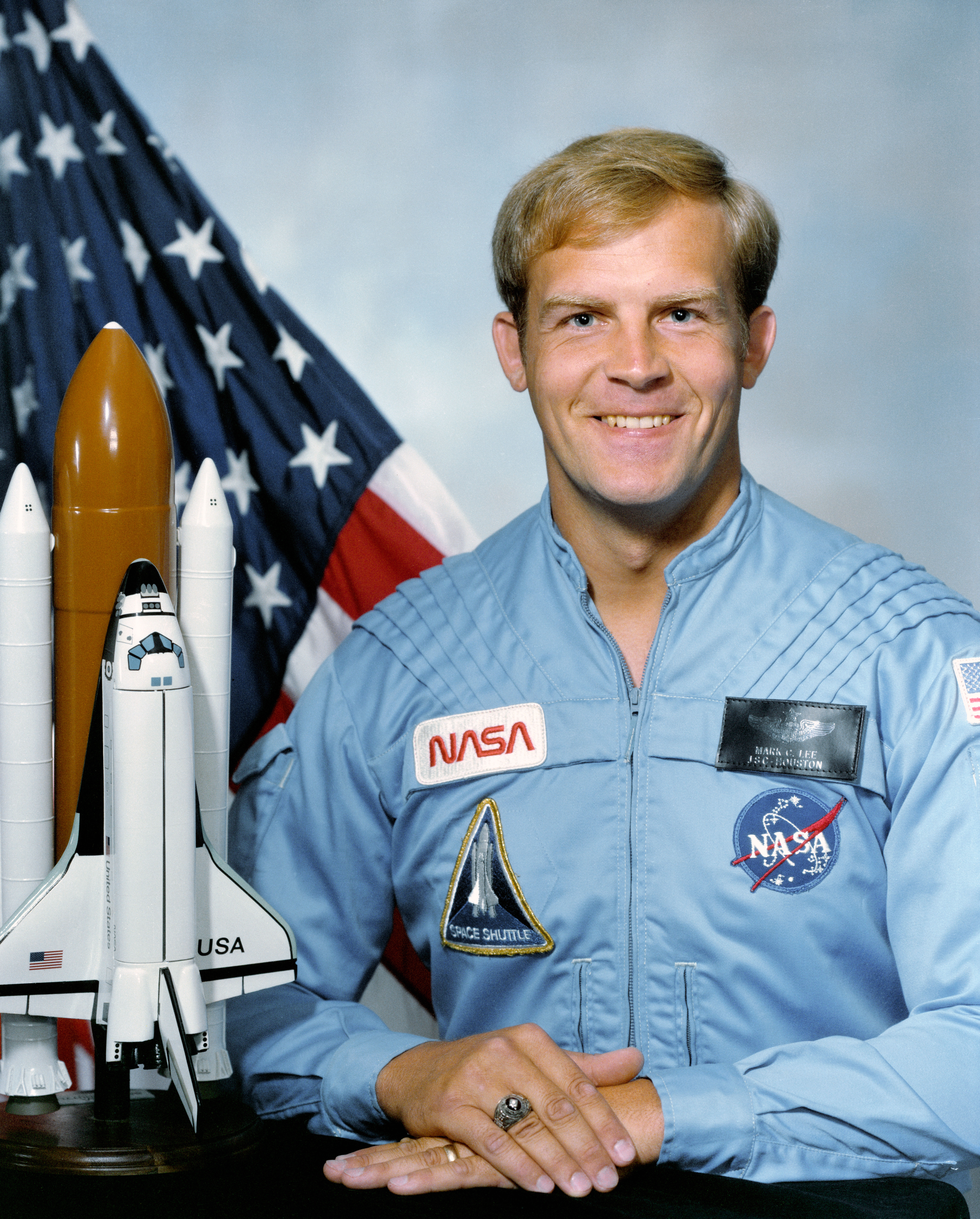
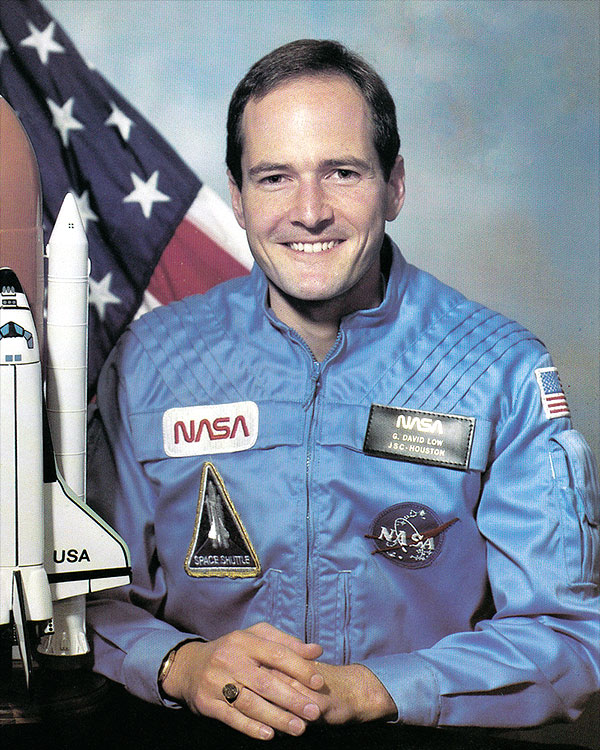
Group 10 NASA astronauts Marsha S. Ivins, left, Mark C. Lee, and G. David Low.
Ivins, a native of Pennsylvania, began working at JSC in 1974, first as an engineer and later as a pilot in aircraft operations, before her selection as an astronaut. She completed her first spaceflight in January 1990 as a mission specialist on STS-32, an 11-day flight aboard Columbia. The five-person crew, including fellow Maggots Wetherbee and Low, launched the Syncom-IV-F5 communications satellite and retrieved the LDEF. Ivins returned to space for the second time in July 1992 aboard Atlantis. During the eight-day flight, the crew deployed the European Retrievable Carrier (EURECA) and conducted the first Tethered Satellite System test. On her third spaceflight in March 1994, Ivins flew with fellow Maggot Casper on STS-62, a 14-day microgravity research mission aboard Columbia. During her fourth spaceflight, STS-81 in January 1997, Ivins traveled to the Russian space station Mir. The 10-day Atlantis mission delivered Jerry M. Linenger to Mir and returned John E. Blaha to Earth. Ivins earned the honor as the first Maggot to visit two space stations, when on her fifth and final spaceflight on STS-98, she and her crewmates delivered the Destiny U.S. Laboratory module to the International Space Station. The February 2001 Atlantis mission lasted 13 days, with Ivins using the shuttle’s Remote Manipulator System, or robotic arm, to attach Destiny to the space station. On her five spaceflights, Ivins accumulated 55 days 21 hours 46 minutes in space.
A native of Wisconsin, Lee holds the honor as the first member of his class to receive a flight assignment, when in June 1985, NASA named him as a mission specialist on Challenger’s STS-61I mission planned for July 1986 to deploy the Intelsat VI-I and the Insat-1C communications satellites and run experiments in the Materials Science Lab-4. Three months later, NASA moved Lee and his entire crew to the STS-61M mission to launch the fourth TDRS satellite. The January 1986 Challenger accident resulted in the suspension of all flight and crew assignments. Assigned in March 1988, Lee made his first spaceflight aboard Atlantis on the four-day STS-30 mission in May 1989 to deploy the Magellan probe to Venus. He returned to space in September 1992 as a mission specialist aboard Endeavour on the seven-day STS-47 Spacelab-J mission. For his third flight, he served as a mission specialist on STS-64, Discovery’s 11-day mission in September 1994, with the LIDAR in Space Technology Experiment as the primary payload. During the flight with fellow Maggot Hammond, Lee participated in one spacewalk to evaluate the Simplified Aid for EVA Rescue (SAFER) propulsive backpack. For his fourth and final spaceflight, STS-82, Lee took part in the second mission to service the Hubble Space Telescope. During the 10-day flight aboard Discovery in February 1997, Lee participated in three of the five spacewalks to install two new state-of-the-art instruments in the telescope and perform other servicing to extend its on-orbit lifetime. Over his four spaceflights, Lee spent 32 days 21 hours 52 minutes in space, and in the course of his four spacewalks, he spent 26 hours and one minute outside.
Ohio-born Low, son of former NASA executive George M. Low, worked at NASA’s Jet Propulsion Laboratory in Pasadena, California, from 1980 until his selection as an astronaut. His first spaceflight took place in January 1990, with fellow Maggots Wetherbee and Ivins, during Columbia’s STS-32 mission. The crew launched the Syncom-IV-F5 communications satellite and retrieved the LDEF during the 11-day mission. On his second mission, Low flew with fellow Maggot Adamson on STS-43, a nine-day mission aboard Atlantis in August 1991 to deploy the fifth TDRS satellite. Low flew his third and final mission aboard Endeavour’s STS-57 in June 1993. During the 10-day mission, the crew retrieved the EURECA free-flyer and Low participated in a 5-hour 57-minute spacewalk. During his three missions, Low accumulated 29 hours 18 hours 5 minutes of spaceflight time. Low died in March 2008.
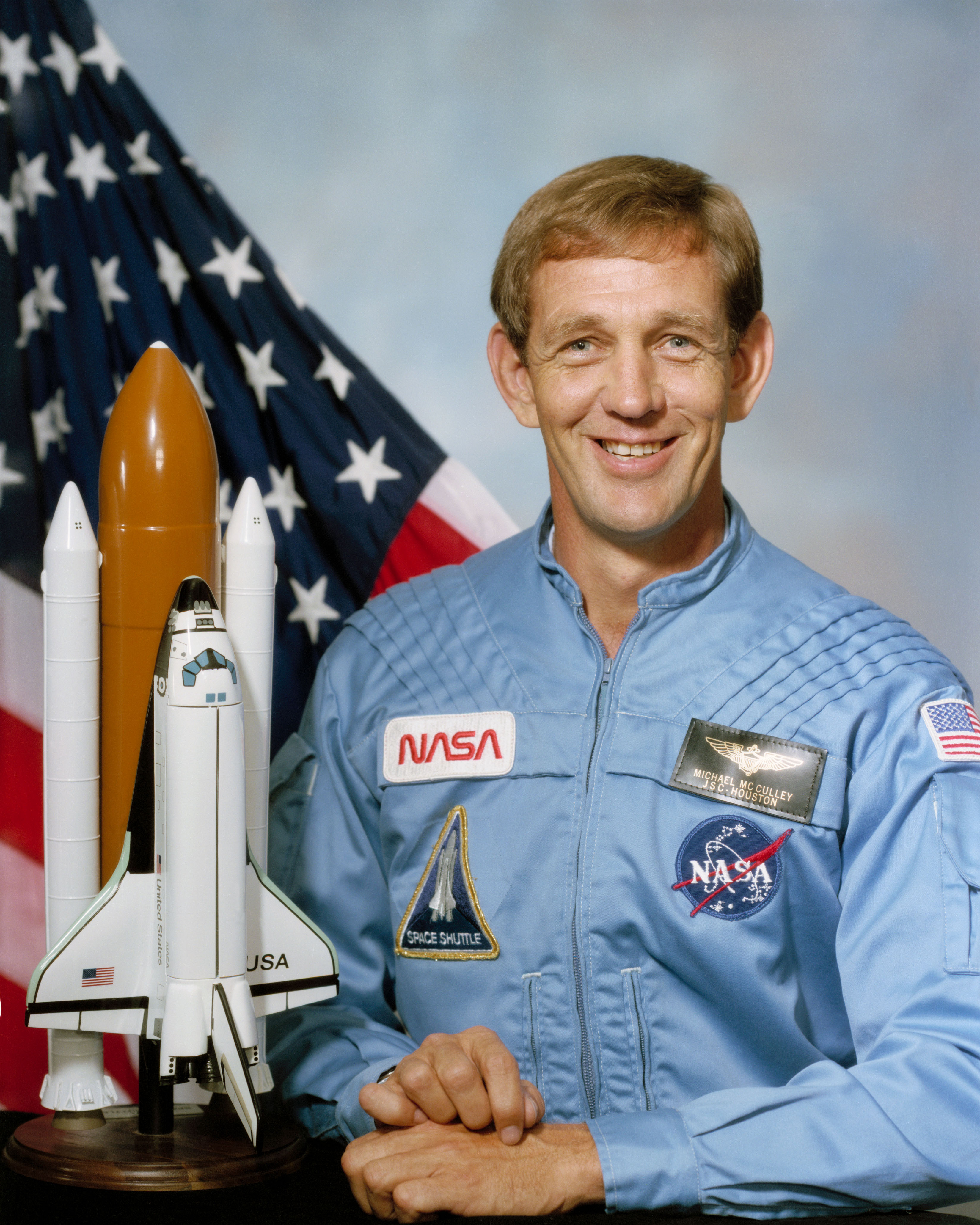
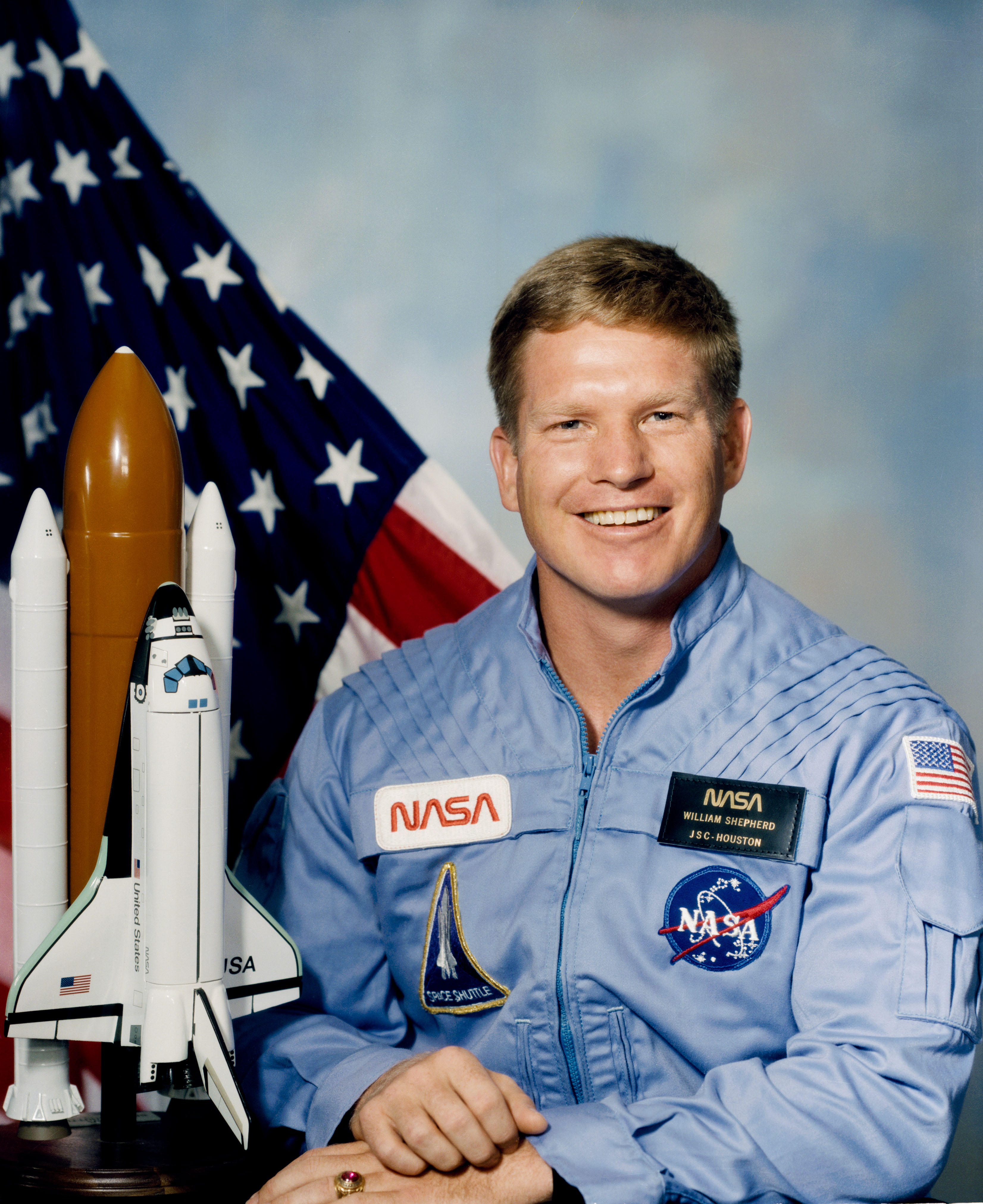

Group 10 NASA astronauts Michael J. McCulley, left, William M. Shepherd, and Ellen L. Shulman.
Tennessee native, submariner, and U.S. Navy test pilot McCulley received his first spaceflight assignment in January 1986 as the pilot of STS-61N, along with fellow Maggots Adamson and Brown, a Department of Defense mission aboard Columbia then planned for September 1986. The January 1986 Challenger accident resulted in the suspension of all flight and crew assignments. Receiving his assignment in November 1988, McCulley flew his one and only space mission as pilot of STS-34, along with fellow Maggot Shulman Baker, the five-day Atlantis mission in August 1989 that deployed the Galileo probe to Jupiter. He spent 4 days 23 hours 39 minutes in space. McCulley retired from NASA in 1990, but remained active in the aerospace community working for several NASA contractors in executive positions until his retirement in 2007.
New York native and U.S. Navy SEAL Shepherd has the honor as the first Maggot to make it to space in December 1988, flying as a mission specialist on STS-27, a four-day classified DOD mission aboard Atlantis and the second shuttle flight following the Challenger accident. His second flight, STS-41 aboard Discovery, took place in October 1990. The four-day mission deployed the Ulysses probe to study the Sun’s polar regions. He flew a third time in October 1992, with fellow Maggots Wetherbee and Veach, on Columbia’s STS-52 mission, a 10-day mission to launch the second LAGEOS satellite and conduct microgravity experiments. From March 1993 to January 1996, Shepherd worked in the International Space Station Program Office, prior to his selection as commander of the first space station Expedition crew. The only Maggot to launch aboard a Russian Soyuz spacecraft, he flew aboard the station for 141 days between October 2000 and March 2001. Over his four spaceflights, Shepherd accumulated 159 days 7 hours 49 minutes in space, more than any other Maggot.
New York native and medical doctor Shulman, later using her married name Baker, began working at JSC in 1981 as a medical officer prior to her selection as an astronaut. She completed her first spaceflight, along with fellow Maggot McCulley, as a mission specialist on STS-34, the five-day Atlantis mission in August 1989 that deployed the Galileo probe to Jupiter. On her second flight, Baker flew as a mission specialist on STS-50, the first U.S. Microgravity Laboratory Spacelab mission, the first to use the shuttle’s Extended Duration Orbiter capabilities. During the 14-day mission in June-July 1992 aboard Columbia, the seven-member crew conducted scientific investigations in a number of disciplines. For her third and final spaceflight, she flew aboard STS-71, the first Shuttle-Mir docking mission. During the 10-day Atlantis flight in June-July 1995, the astronauts exchanged the Mir-18 crew, including Norman E. Thagard, the first American to live and work aboard Mir, with the Mir-19 crew, and conducted biomedical investigations inside a Spacelab module. Baker accumulated 28 days 14 hours 31 minutes of spaceflight time across her three missions.
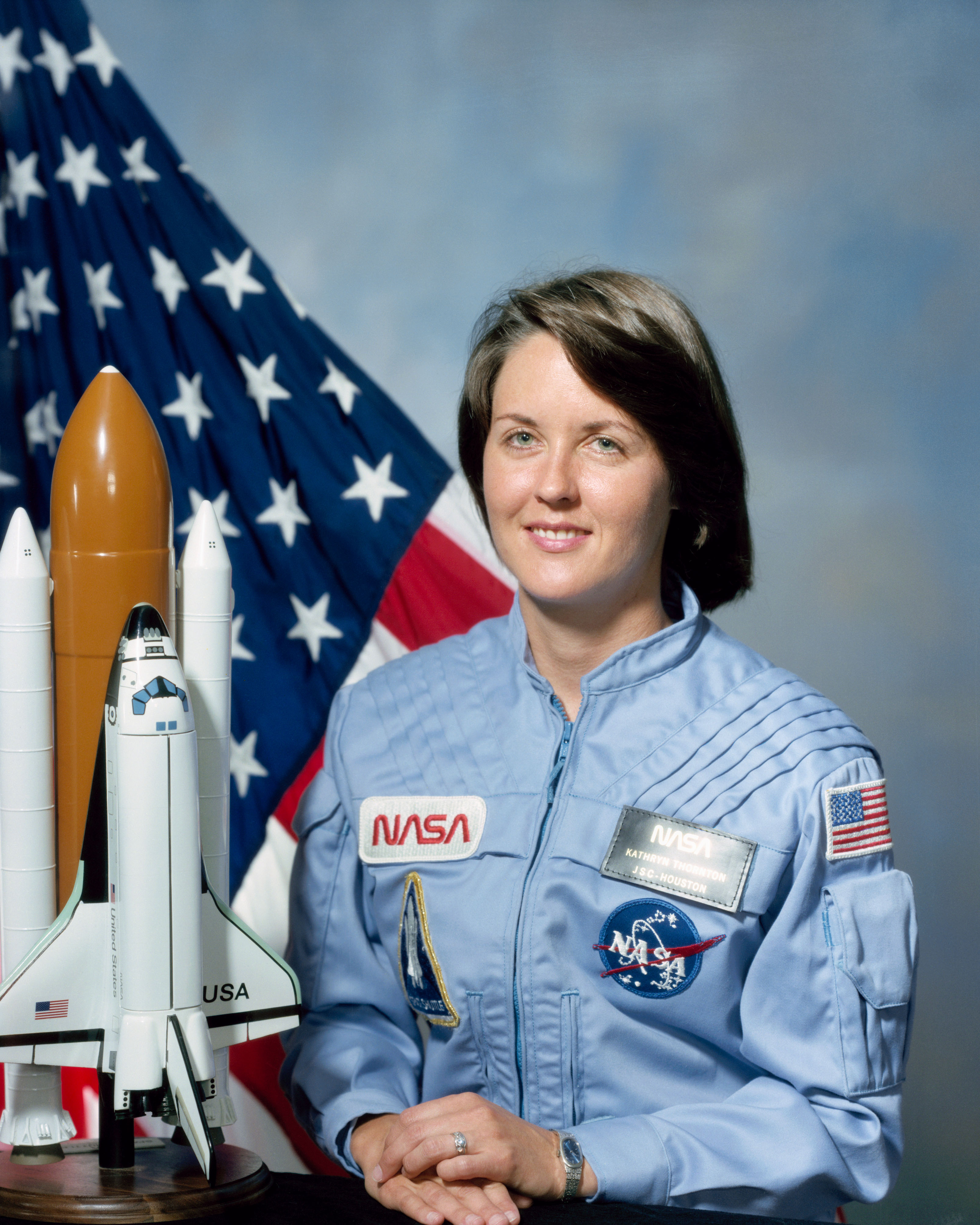
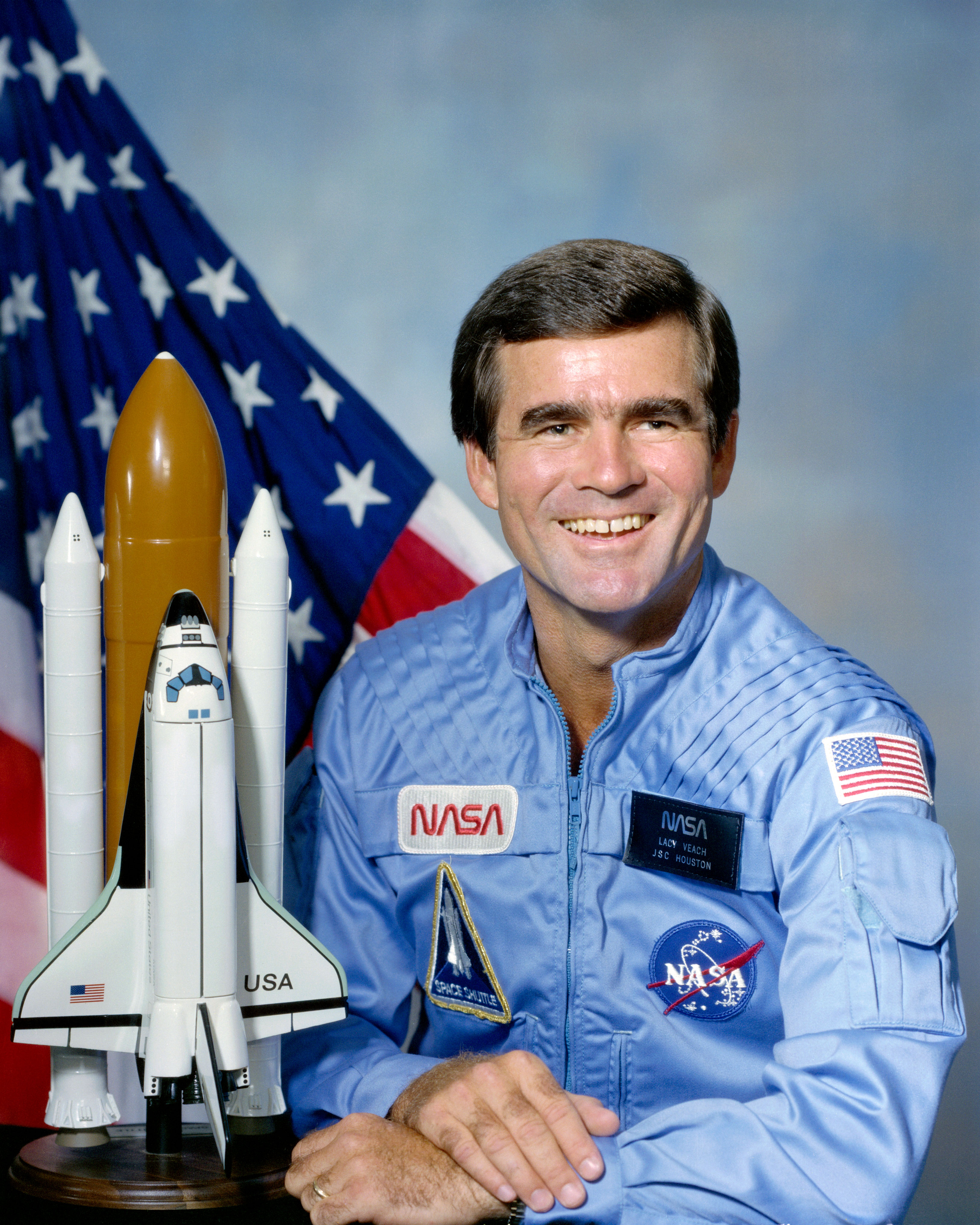
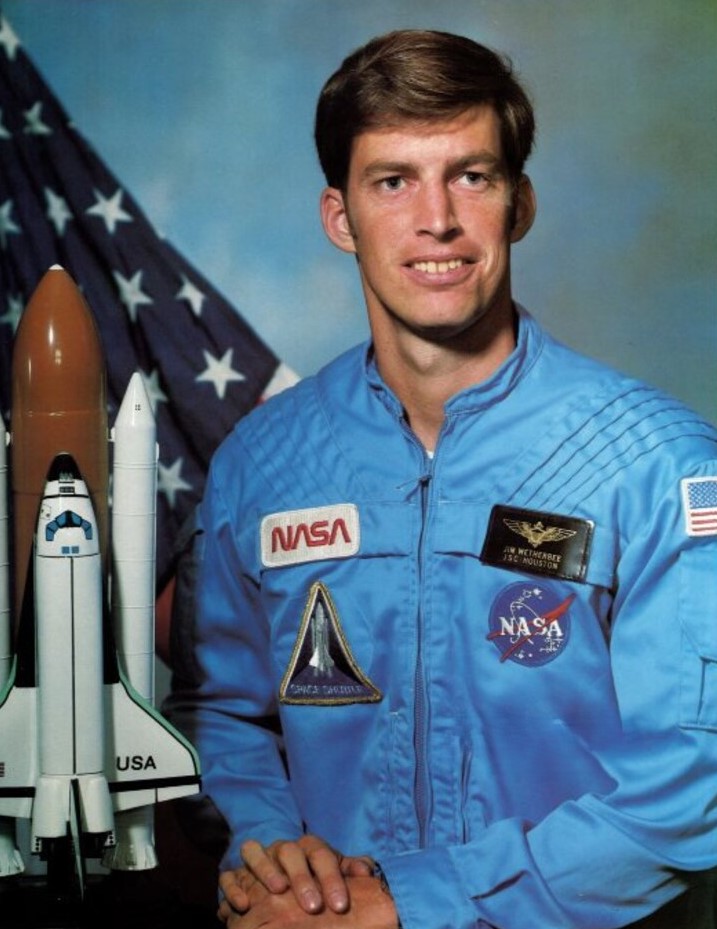
Group 10 NASA astronauts Kathryn C. Thornton, left, C. Lacy Veach, and James D. Wetherbee.
With a doctorate in physics, Alabama native Thornton completed her first spaceflight, STS-33, in November 1989, with fellow Maggot Carter. The five-person crew conducted a five-day DOD classified mission aboard Discovery. On her second flight, Thornton served as a mission specialist on STS-49, Endeavour’s first flight. During the nine-day flight in July 1992, the astronauts retrieved and reboosted the Intelsat-VI-F3 communications satellite. Thornton participated in one of the four spacewalks on the flight, spending 7 hours 45 minutes outside to demonstrate tools and techniques for space station assembly. She served as a mission specialist on her third flight, STS-61, the first servicing mission to the Hubble Space Telescope to correct its optics and perform other servicing tasks, with Thornton participating in two of the five spacewalks. The 11-day flight aboard Endeavour took place in December 1993. In October-November 1995, Thornton flew her fourth and final mission, STS-73, the 16-day second U.S. Microgravity Laboratory Spacelab mission aboard Columbia. Across her four flights, Thornton accumulated 40 days 15 hours 13 minutes, and spent 21 hours 11 minutes outside on her three spacewalks on two different missions.
Calling Hawaii home, former Thunderbird pilot Veach came to work at JSC in 1982 as an engineer and research pilot before his selection as an astronaut. He flew his first spaceflight as a mission specialist on the STS-39 unclassified DOD mission aboard Discovery. Fellow Maggot Hammond served as pilot on that eight-day mission in April-May 1991. He completed his second and final mission on STS-52, along with fellow Maggots Wetherbee and Shepherd, a 10-day mission in October 1992 to launch the second LAGEOS satellite and conduct microgravity experiments. Across his two missions, Veach accumulated 18 days 4 hours 18 minutes of spaceflight time. He died of cancer in October 1995.
Hailing from New York State, U.S. Navy test pilot Wetherbee completed his first spaceflight as pilot on STS-32, an 11-day flight aboard Columbia in January 1990. Accompanied by fellow Maggots Ivins and Low, the seven-member crew launched the Syncom-IV-F5 communications satellite and retrieved the LDEF. In October 1992, he flew as commander on his second spaceflight, STS-52, a 10-day mission aboard Columbia to launch the second LAGEOS satellite and conduct microgravity experiments. Fellow Maggots Shepherd and Veach accompanied him on this flight. On his third mission, he commanded STS-63 in February 1995, the first mission to rendezvous with Mir. The eight-day Discovery flight also included Eileen M. Collins as the first woman shuttle pilot, and two spacewalks. In August 1995 and Wetherbee began serving as JSC’s deputy center director, returning to the astronaut office in December 1996 to train for and fly another mission. On Wetherbee’s fourth mission, he returned to Mir, this time to dock. During Atlantis’ 11-day STS-86 mission in September-October 1997, he commanded the crew who brought David A. Wolf to Mir and returned C. Michael Foale to Earth. Wetherbee resumed his duties as JSC deputy center director in December 1997, remaining in that position until March 2000. He completed his fifth flight to space on STS-102 in March 2001, visiting his second space station. As commander, he oversaw the transfer of the first research rack to the station and the exchange of the Expedition 1 and 2 crews, returning to Earth with fellow Maggot Shepherd. Wetherbee earned the honor as the first, and so far only, American astronaut to command five space missions when he flew for his sixth and final time in November-December 2002. During Endeavour’s 14-day STS-113 mission, the crew brought Expedition 6 to the space station and returned Expedition 5 to Earth, and delivered and installed the P1 truss segment. This marked the last successful mission before the Columbia accident. Over his six missions, Wetherbee accumulated 66 days 10 hours 20 minutes of spaceflight time.

Summary of spaceflights by Group 10 astronauts. Missions in italics represent flights the astronaut was assigned to but never flew.
The Group 10 NASA astronauts made significant contributions to America’s space program, helping to recover from the Challenger accident and greatly expanding the capabilities of the space shuttle. As a group, they completed 51 flights and spending 706 days, or nearly two years, in space. Their spaceflights took place from 1988 to 2002, spanning the period between the Challenger and Columbia accidents. Group members tested tools and techniques for the space station, while others visited space stations, adding modules to both Mir and the space station. Four of the group visited Mir, and four visited the International Space Station including two as expedition commanders. Two Group 10 astronauts visited both stations. Six of their group participated in Spacelab-class missions, and nine flew on DOD missions. Members of the group helped to launch one of NASA’s great observatories (GRO) and service another (Hubble), and sent spacecraft to study Venus, Jupiter, and the Sun’s poles. The group included the first U.S. born Hispanic American to not only travel in space but pilot and later command a shuttle mission, the first submariner in space, the first and so far only, American to command five space missions, the first to command a space station expedition, and the first to command both a shuttle mission and space station expedition.































